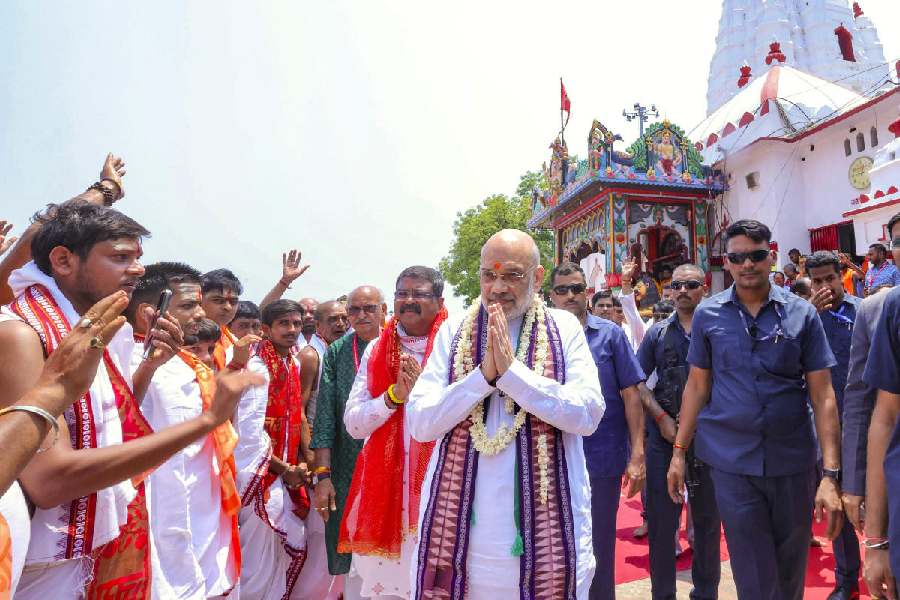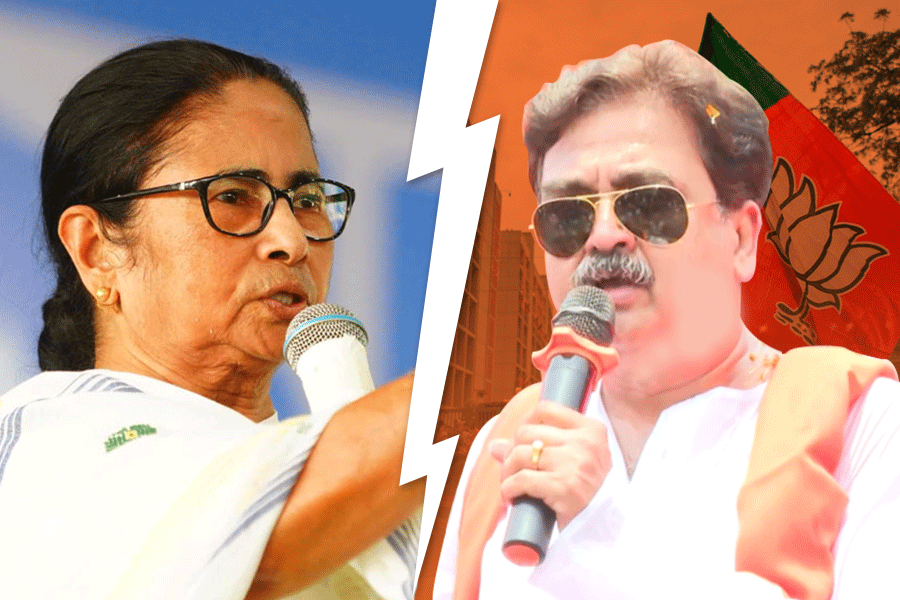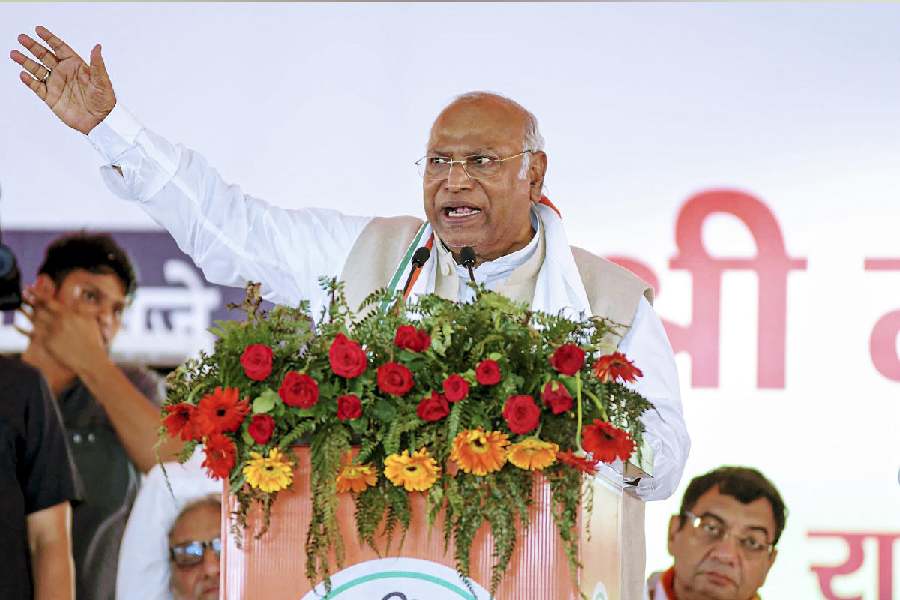Abstraction wrangles with figuration in Indian art — they are not divergent fields as they are in the West. This liminal space between form and formlessness is where Murta/Amurta, an exhibition by the Society of Contemporary Artists held at Akar Prakar recently, was situated. Ganesh Haloi’s canvas is a perfect example of this — two landmasses that are similar in every way are divided by a thin chasm running down the centre. All this is conveyed using Haloi’s signature smattering of sprightly shapes and lines. Atanu Bhattacharya hints at such a rupture too in his pulsating pigments on canvas. Pradip Maitra depicts what such a fissure does to people through tattered identity papers, with watercolour washes conveying their frailty perfectly.
Bholanath Rudra is among the most promising artists not just of SCA but also of his generation — his landscapes (picture, left) have an ephemeral quality. David Malakar’s sooty ink and soft pencil work was an idyllic abstraction of a wheatfield. Lalu Prasad Shaw’s etching and lithograph (picture, right) were both strikingly poignant and very different from the artist’s usual works. Monoj Mitra was bold in his use of contrasting textures, introducing a feeling of discomfort, whereas Rajen Mondal’s juxtaposition of colours and shapes was elegant and minimal. Manu Parekh, Pankaj Panwar and Niranjan Pradhan conjured up floral and faunal representations in shapes that were as recognisable as they were alien. Bimal Kundu’s leather and metal sculpture, Poison Box, was eerie; it was a scathing comment on the disregard for human life, especially of the downtrodden.
In the hands of Atin Basak, the insides of vegetables and of humans became inseparable while Aditya Basak expertly created layers of depth with ink in his reimagination of blueprints of the city. Soumen Khamrui’s works were pure abstraction — the marbled, greyish canvases were mesmerising and reminded one of the weathered walls of old limestone caves. Srikanta Paul’s Aarshi Nagar was a book that chronicled the artist’s fevered dreams.










